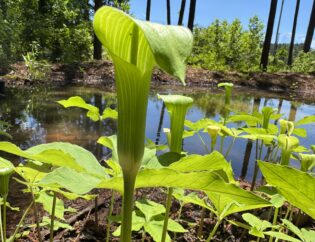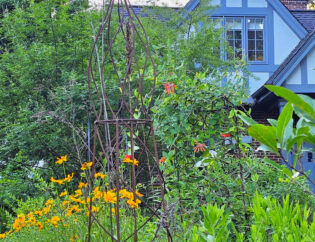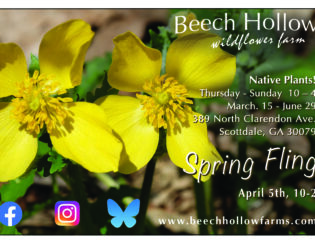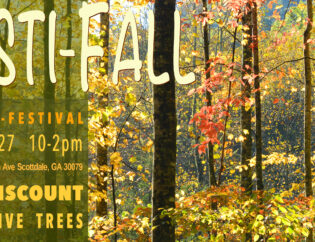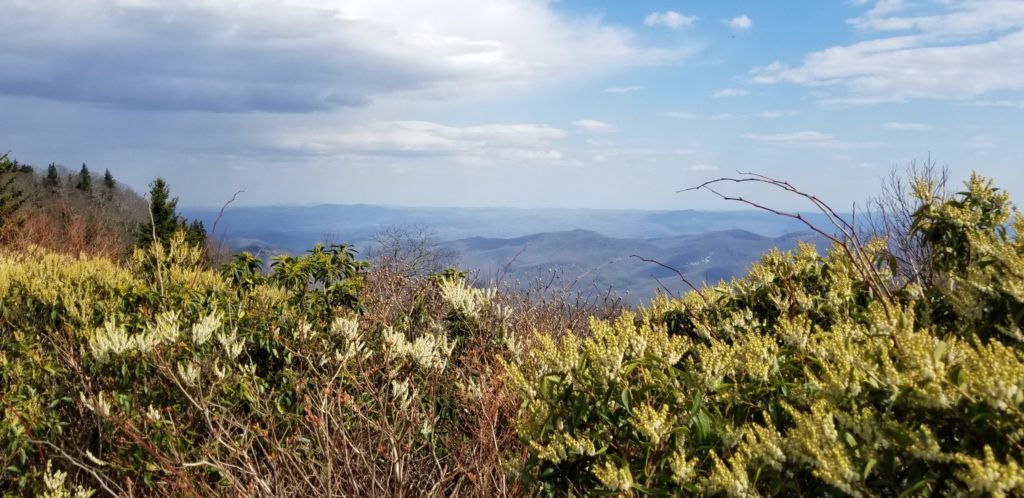
Mountain Andromeda, Pieris floribunda, gracing a North Carolina view.
by Ron Wik
The last question I ask a Horticulturist or gardener candidate during an interview is always the same. I usually preface the it by saying it’s the most important question. “What is your favorite plant?” It often seems they’ve never thought about it. “Ooooh… that’s a tough one. I don’t know if I could pick only one.” Their responses tell me a lot about them. If they say ‘tomato’ I’m not terribly impressed. ‘Welwitschia mirabilis’ on the other hand? Occasionally they’ll turn the question back on me and without hesitation I say “Trillium grandiflorum.”
My love for plants began while working beside my grandmother in her gardens at a very early age. It became a passion shortly after when I discovered T. grandiflorum growing in the wooded area surrounding a local park in my hometown in rural Michigan. It was a very small population surrounding the trunk of a basswood tree, but something about it mesmerized me. I researched all I could about it, which was not easy for a six-year-old in the days before Google.
It is an amazing little plant. It’s simple. It’s elegant. It’s refined. It’s fleeting. A true harbinger of spring. Every April, I’d go into the woods and brush aside the leaf litter to see those tight little green cigars emerging from the recently frozen ground, soon followed by an unfurled three leaflets crowned by that
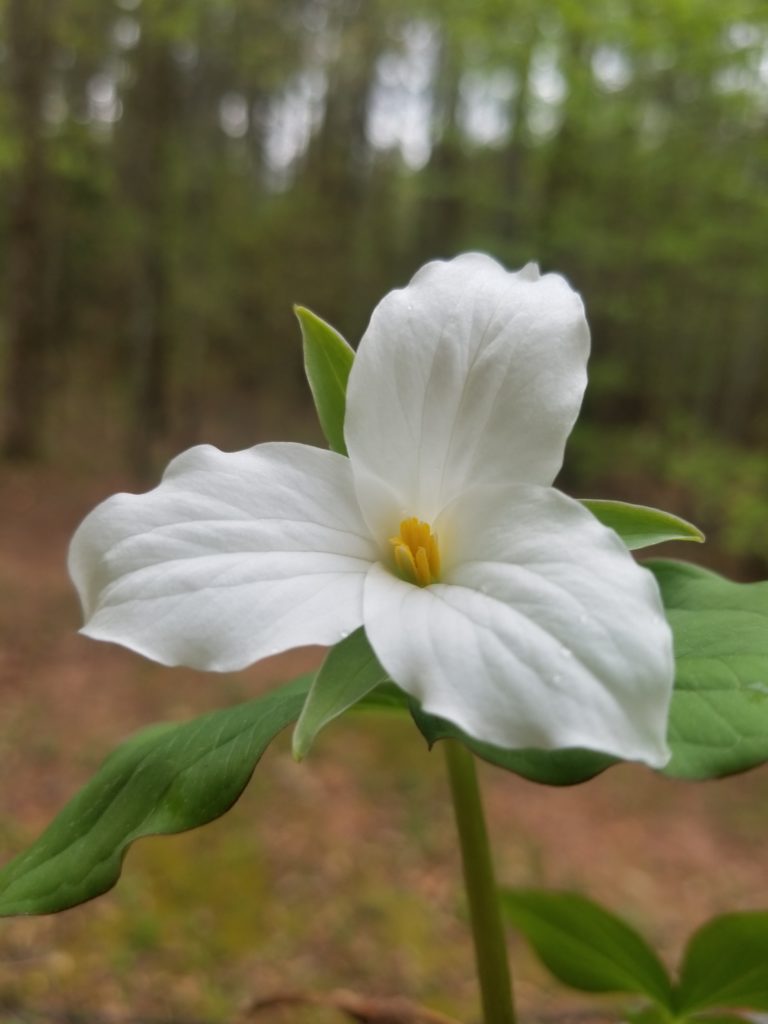
Trillium grandiflorum.
bright, pure white blossom that slowly fades to pink then red, terminating in plump, translucent, geometric gem of a berry, all in a matter of weeks. Add to that its longevity, contractile roots, elaiosomes and it’s quite the bewitching beauty.
I was fortunate to have been invited back to Beech Hollow Farm this past winter at the perfect time to reawaken my passion for trillium. The Pocket in Chickamauga, GA was my first stop where I saw T. decumbens, cuneatum (little sweet betsy), and flexipes growing in their natural splendor. My first encounter with the decumbent trillium was a few feet from the road to the entry to the preserve. The highly variable silver mottling, with the deep burgundy flower sitting on the forest floor, really must be seen in person to be appreciated. This charming beauty reminded me why wakerobins enamored me as a child. From there, I was on a mission. My goal was to see all 25 (give or take) southeastern trillium in situ. I sleuthed out the places I was likely to find particular species. The quest took me to all the states in the region and beyond as I ultimately expanded my scope to see all 34 species east of the Rockies.
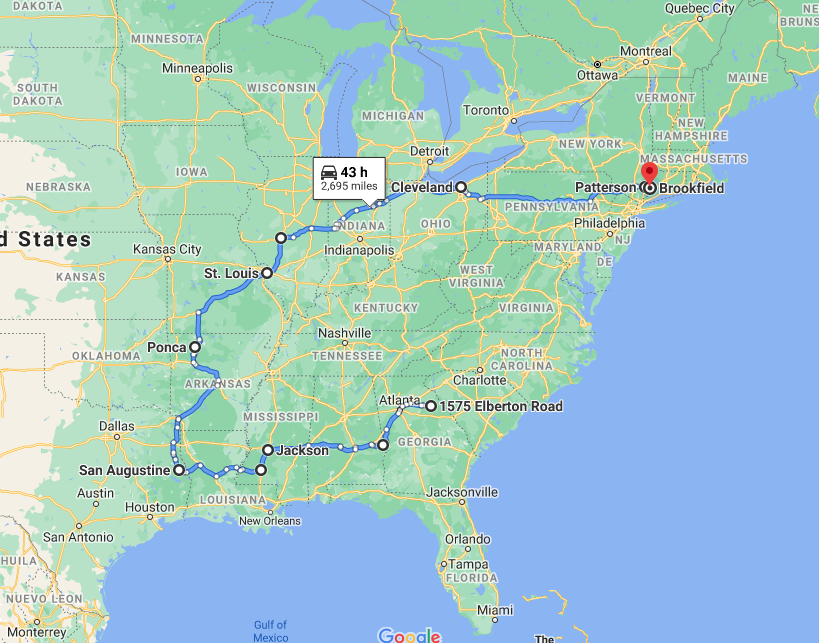
Seeing these unique plants growing in their native habitats was indescribable. The near black petals of T. sulcatum growing on a rocky slope in Chattanooga. The color variations of all the little sweet betsy, everywhere. The beautiful mottling on the foliage of T. underwoodii in Auburn, AL. The stately presentation of T. decipiens outside Columbus, GA. Most surprising to me were the fragrances. Other traits can be captured in a photograph. But the scents these crafty plants use to entice critters to their blooms can only be appreciated in the woods, on one’s hands and knees, stooping as low as an inch or two off the ground.
There was the population of T. luteum along a stream in Chatsworth, GA that perfumed the vicinity with the aroma of lemony daffodils. The unique offering of T. tennesseense that I would agree with others is reminiscent of
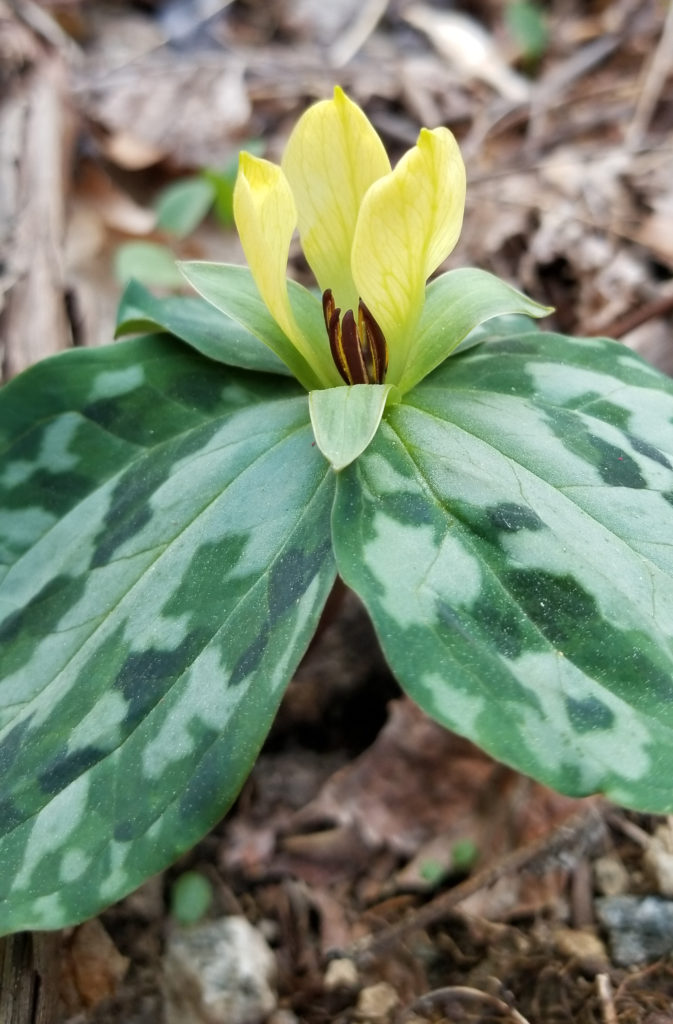
Trillium discolor.
shoe polish was not something I’d experienced in nature. And I don’t know if it’s just me, but the T. discolor found growing along a roadside in Cashiers, NC made me hungry for the Colonel’s original recipe. Then there’s the putrid species. Diminutive, manure-scented, T. delicatum left me nostalgic for my days at Michigan State when the wind was out of the south. And we all know the aptly named stinking Benjamin.
Now, finding the rarest species, that I’d only read about, were nearly religious experiences for me, having required research and in some cases rather long hikes. But most confounding to me was my search for the common toadshade (T. sessile). I’d read that I was indistinguishable (I disagree) from little sweet betsy but for the malodorous bloom. It is supposedly in the region and everywhere I went I’d crouch down to assess the burgundy blooms atop mottled leaves. It started at Scull Shoals in Georgia. No. Spicy fruit… little sweet betsy. The banks of the Tennessee River in Chattanooga? No… spicy fruit. A hillside garbage dump in Beersheba Springs, TN? Rancid spicy fruit? Getting warmer. On and on it went. I must have smelled hundreds if not thousands of little sweet betsy in the hopes finding an odor that would churn my stomach. Didn’t happen.
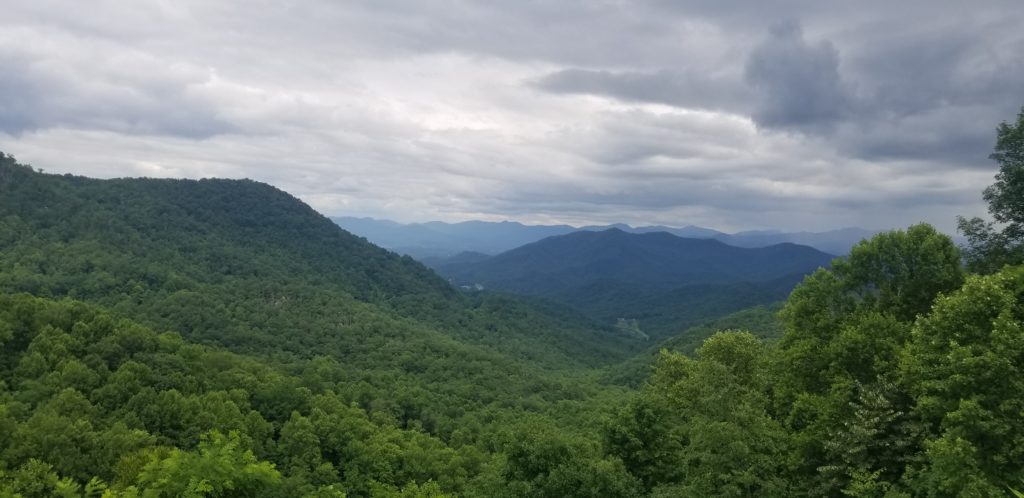
Beautiful Tennessee Mountains.
My visit came to an end with T. sessile the only regional species that eluded me. The route I chose to return to my home in Connecticut took me on a very indirect route through the deep south to see T. ludovicianum in Louisiana, T. gracile in Texas, up through Missouri for T. pusillum v. ozarkanum, into Indiana for T. nivale, with several others along the way. And finally, on a frigid May morning, near Cleveland, Ohio, I bent down to take a whiff of a mottle-leafed burgundy wakerobin. Rotting fish never smelled so good.

Trillium sessile, Common toadshade.
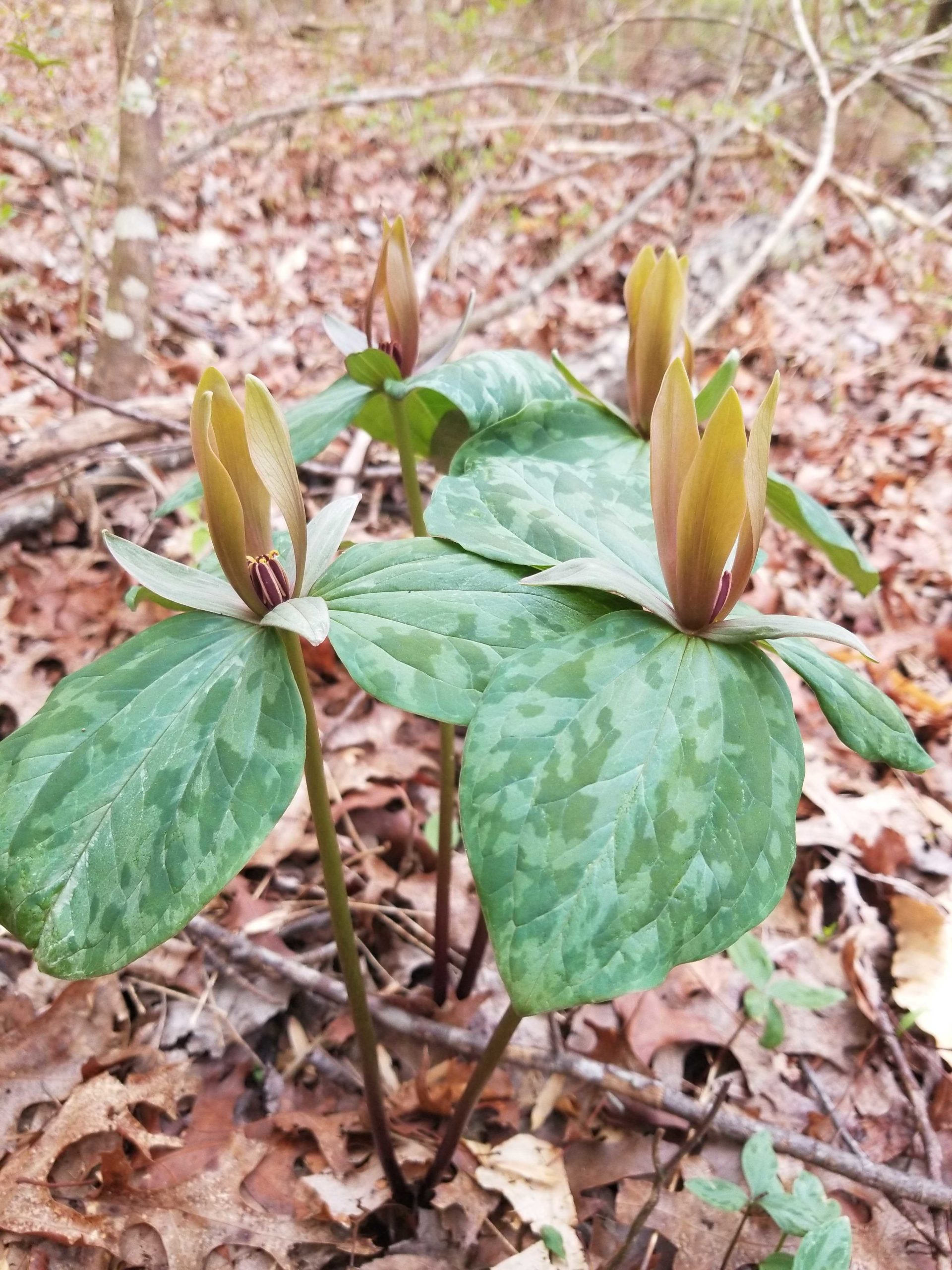
Trillium cuneatum, Little sweet betsy .
Here are some additional photos from Ron's Trillium Travels:

Above Trillium stamineum.

Trillium cernuum.
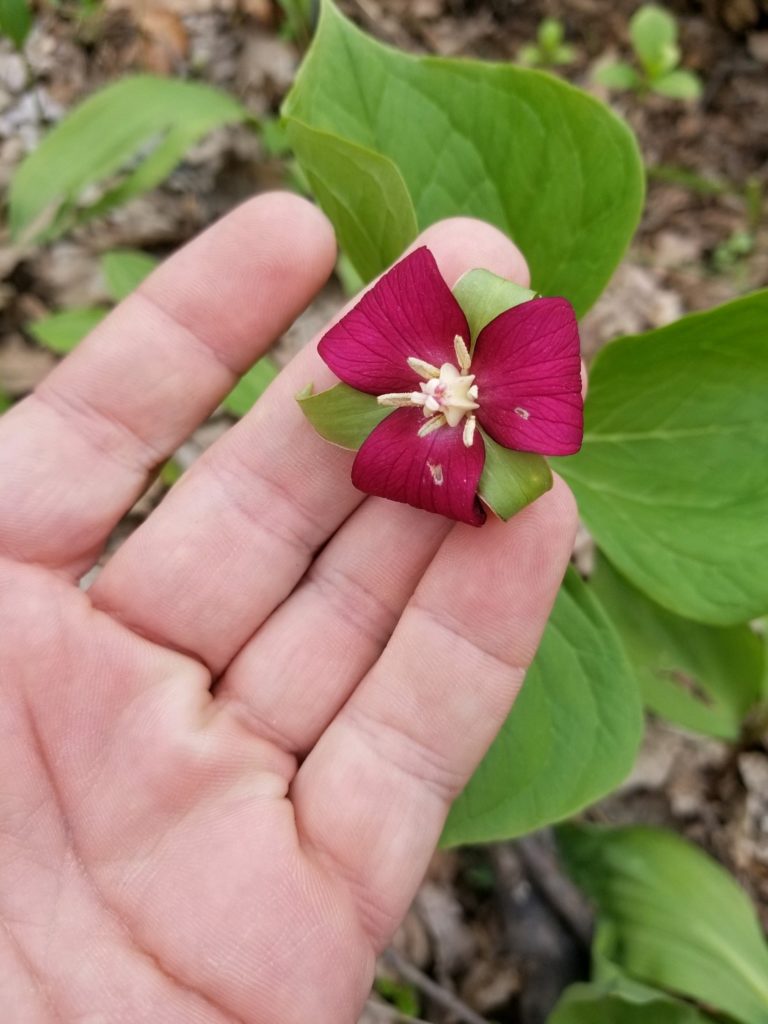
A red form of Trillium flexipes in Ohio.
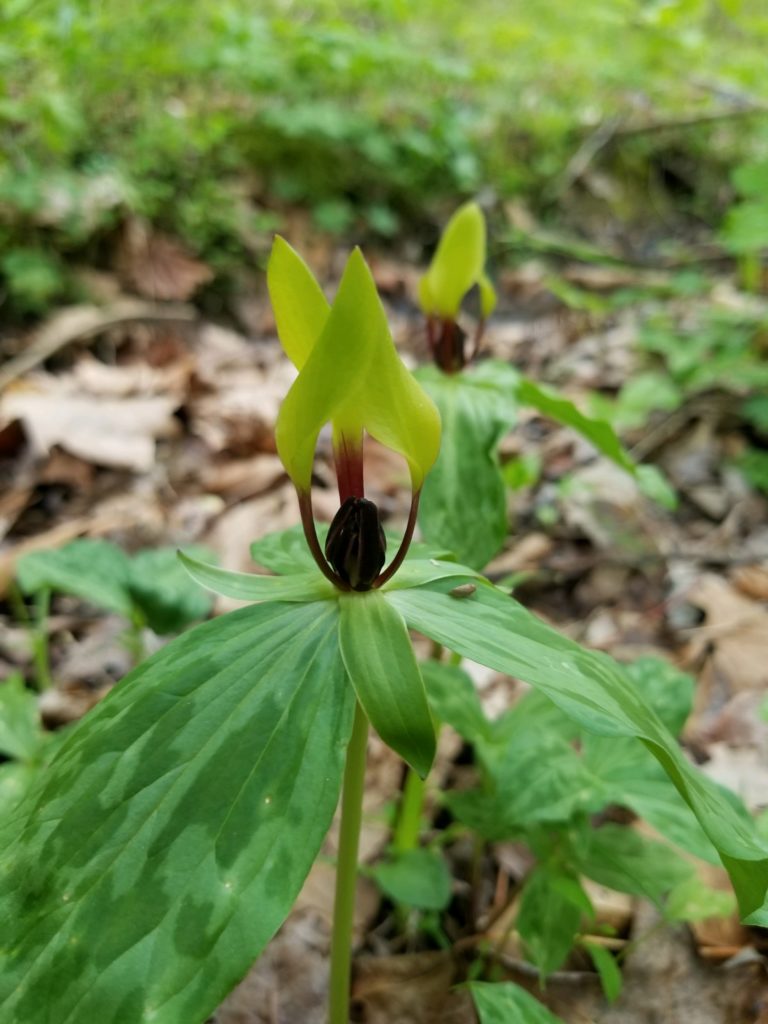
And last but not least, the very rare Trillium oostingii, the Wateree Trillium.
